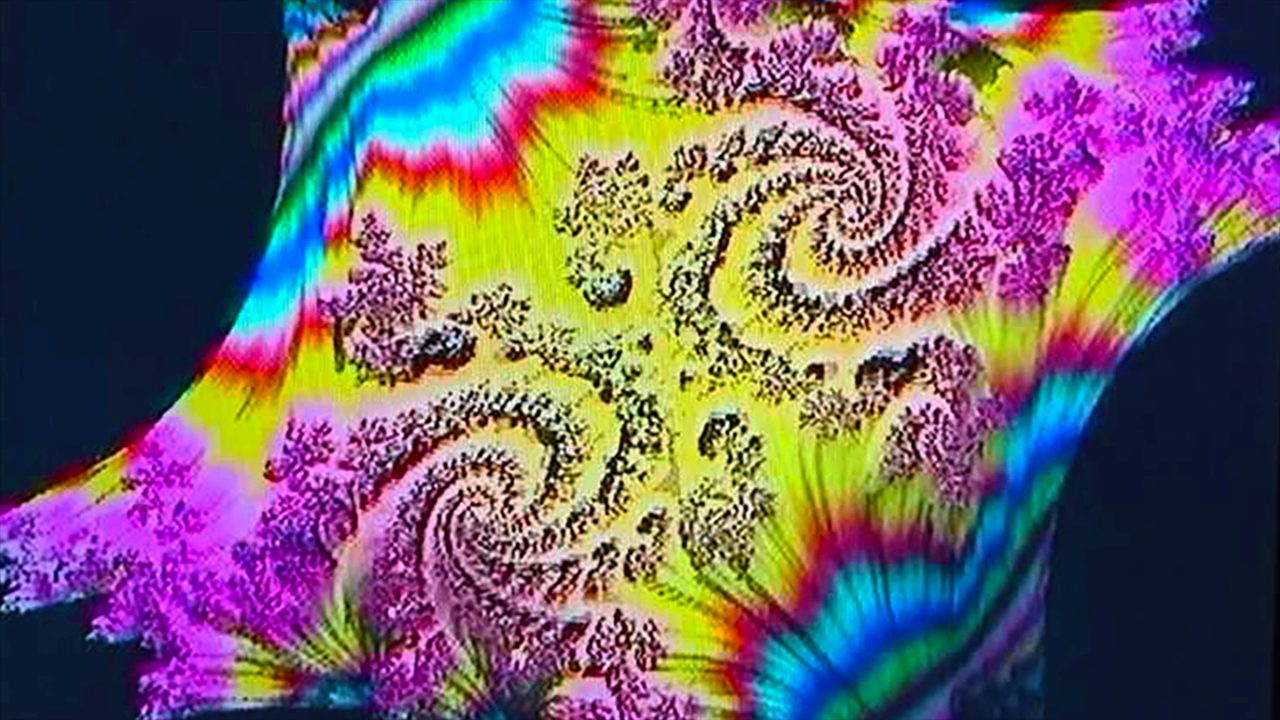Reader reviews “Chicago New Media 1973-1992“ exhibition featuring UIC Electronic Visualization Laboratory
November 29th, 2018
Categories: Animation, Multimedia, Sound Art, Video / Film, VR, VR Art, Video Games

About
‘Chicago New Media 1973-1992’ pays tribute to the city’s contribution to video games and digital art
EDITOR’S NOTE: Chicago’s Reader newsletter, on November 29, 2018, reviewed the art exhibition “Chicago New Media 1973-1992” currently at Gallery 400 on the UIC campus from November 1 until December 15, 2018. This exhibition prominently features the Electronic Visualization Laboratory (EVL) at the University of Illinois at Chicago (UIC), as it spans the dates EVL was founded (1973), through EVL’s introduction of the CAVE™ automatic virtual environment (1992). This exhibition opened with an afternoon symposium featuring EVL co-founders and co-directors emeriti Tom DeFanti (distinguished professor emeritus of UIC Computer Science) and Dan Sandin (professor emeritus of UIC Art), as well as early students and collaborators.
The show focuses on Chicago’s contribution to new media history through a broad installation of video games, digital art, video art, and archival materials. Curator Jon Cates, Associate Professor of Film, Video, New Media and Animation, Art History, Theory and Criticism at the School of the Art Institute of Chicago, is interviewed by Reader journalist Caroline Picard, and highlights the way “new media” - video art, video games, and electronic music - evolved through a radical community of Chicago-based early adopters in the early 70s.
“‘This creative culture of collaborative communities [in Chicago] gathered together regularly to perform in various configurations publicly during annual Electronic Visualization Events on the campus of the University of Illinois at Chicago,’ he says. ‘Their connections were social, artistic, educational, and technological.’ The exhibition shows how people like Dan Sandin, Phil Morton, Tom DeFanti, Ted Nelson, Jamie Faye Fenton, and others connected commercial gaming, academic research, and independent art-making in a way that permanently impacted the industry. These figures, Cates says, ‘fostered ethical commitments through new kinds of art, novel in their form and content.’”
In summary, Picard writes: “Most of these innovations have become so integrated in our daily lives, it’s difficult to remember that they are not only recent but also shaped, at least partly, by Chicagoans. Cates and his partners have created a compelling installation with almost 100 contributing artists, scientists, developers, and public program participants. The resulting showcase of once-innovative equipment, archival materials, school curricula, interactive timelines, and video games not only captures the energy of play but also the processes by which we see ourselves today.”
Read the entire Reader article - ‘Chicago New Media 1973-1992’ pays tribute to the city’s contribution to video games and digital art.
There is still time to visit Gallery 400 and see “Chicago New Media 1973-1992,” which ends December 15.
Gallery 400 Website